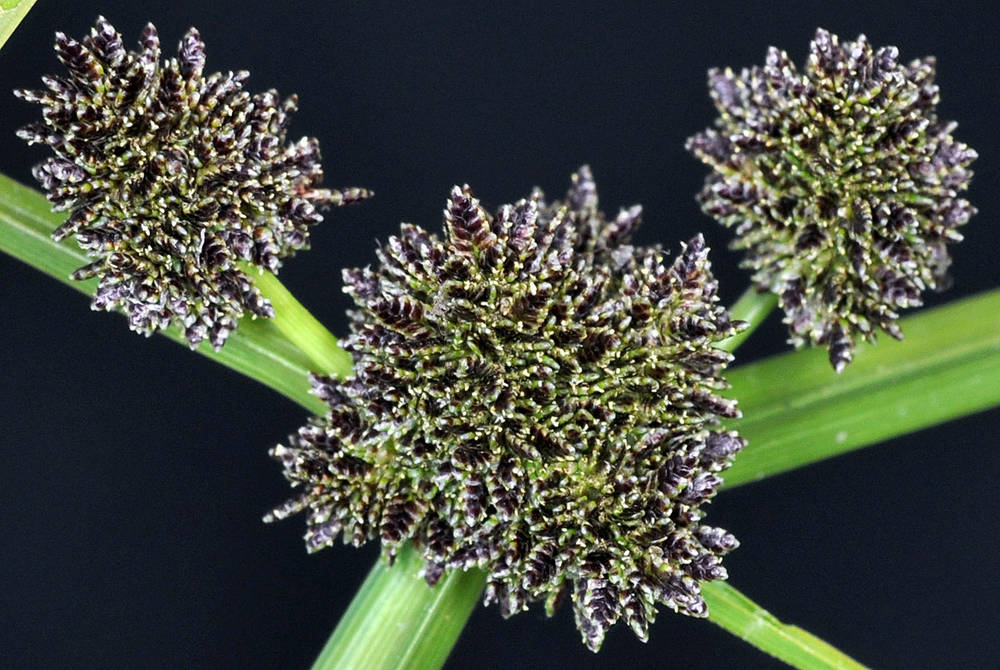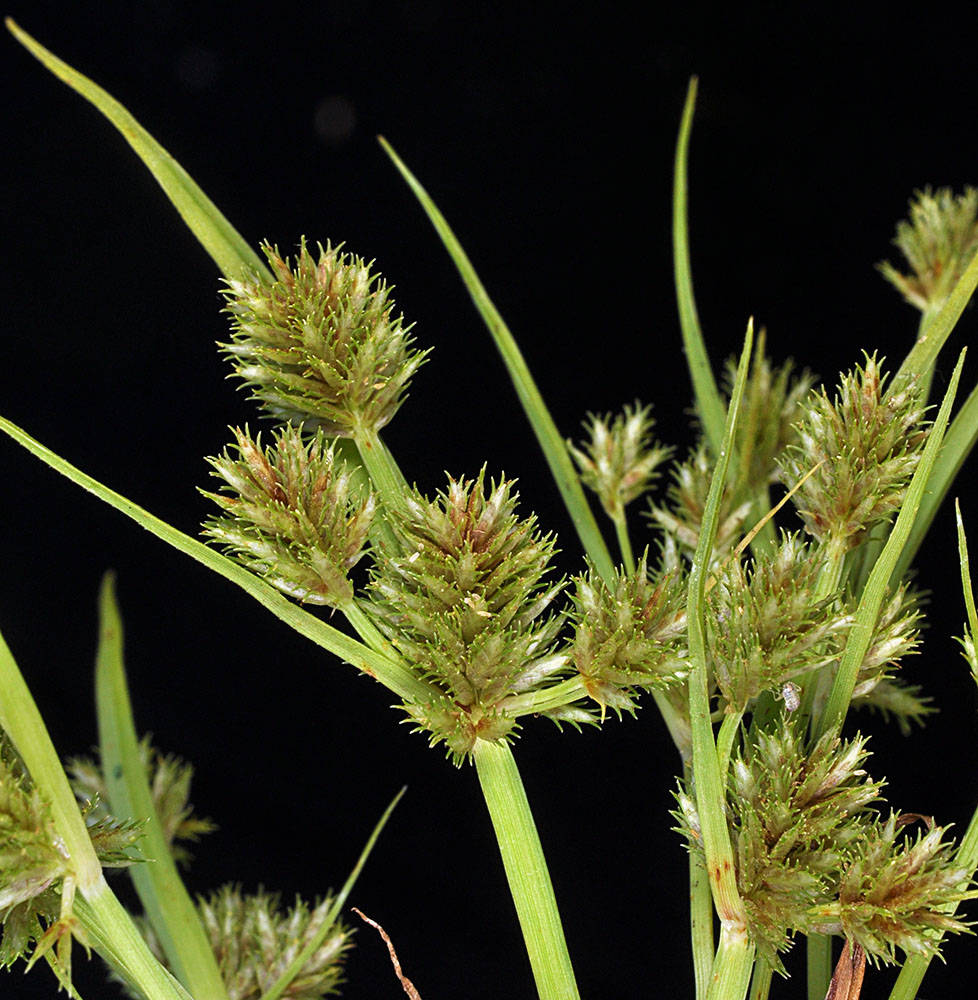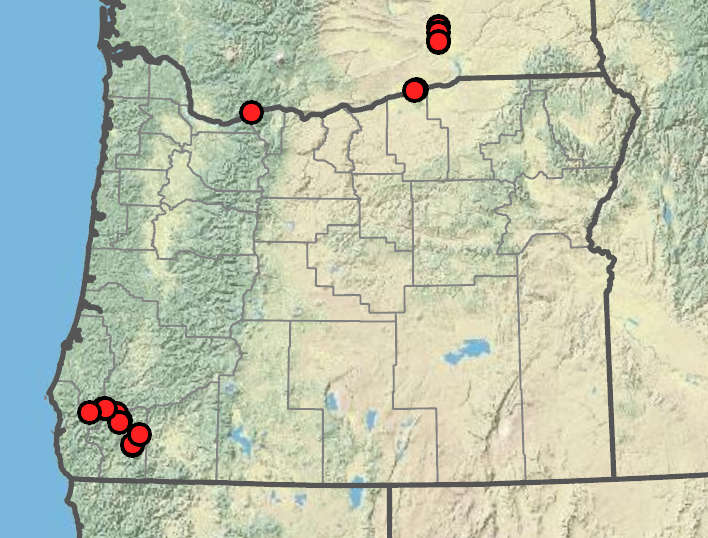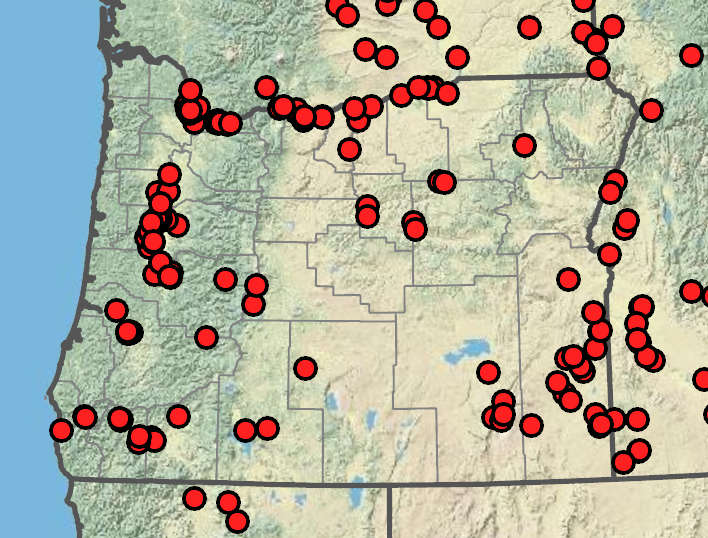Cyperus difformis
Cyperus squarrosus
Asian flatsedge
awned flatsedge
1–15, trigonous, 7–30 cm × 1.2–2.5 mm; soft (flattened in pressing).
1–20, trigonous, 2–16 cm × 0.5–0.8 mm.
(2)7–22 cm × 2.2–4 mm.
(1)5–10(15) × 0.5–2.5 mm.
clusters head-like; dense, 7–17(35) mm wide;
rays (0)1–5, 2–32 mm; longest inflorescence bract erect or nearly so, appearing as continuation of culm; other bracts horizontal to ascending.
clusters usually densely head-like to cylindric, 1, loosely to densely ovoid to oblong, 6–20(40) × 9–15(20) mm;
rays absent or 1–3(6), 0.4–4 cm; longest inflorescence bracts more or less erect.
30–120, oblong-ellipsoid, compressed; (2)3–5(6) × 0.8–1.2 mm; greenish brown to purplish brown; floral scales (6)12–20(30), obovate to orbiculate, 0.6–0.8 × 0.6–0.8 mm, stramineous to deep purple with clear margins; mid-stripe greenish, stramineous, or purplish;
lateral ribs 0; medial ribs 3;
apex mucronulate.
(2)6–20(40); ovoid-lanceoloid to oblong; somewhat compressed, 2.5–10(20) × 1.3–2.2 mm (excluding awns); greenish to reddish brown;
rachilla more or less deciduous; wingless; floral scales deciduous; (4)10–20(34), oblong-lanceolate; (1.2)1.3–1.8(2.2) × (0.5)0.7–0.8(1) mm; greenish to stramineous or brownish red with greenish mid-stripe; (5)7–9(11)-ribbed nearly to margins;
apex awned; the strongly outcurved awn an additional 0.5–1(1.3) mm.
anthers 0.1 mm;
styles 0.1 mm;
stigmas 0.1–0.3 mm.
anthers 0.2–0.3 mm;
styles 0.3–0.5 mm;
stigmas 0.4–0.7 mm.
obovoid-ellipsoid, 0.6–0.8 × 0.3–0.4 mm (as long as subtending scale);
base cuneate.
obovoid (occasionally linear-spatulate or linear-oblong), 0.7–0.8(1.1) × (0.2)0.3–0.4(0.5) mm;
stipe 0.05–0.1 × 0.1 mm.
Cyperus difformis
Cyperus squarrosus
Disturbed, sandy or muddy soils, sand bars, roadsides, sometimes on serpentine. 100–400 m. Sisk. CA, ID; east to NJ, south to Mexico; South America; Africa, Australia, Eurasia, islands of the Pacific and Indian Oceans; Exotic.
Cyperus difformis is recognized by its tight heads of small spikes with unusually small scales. The first Oregon collection was made in 2004.
Lake shores and river margins exposed as water falls, puddles, disturbed shallow wetlands. 0–1300 m. BR, BW, Col, CR, ECas, Lava, Owy, Sisk, WV. CA, ID, NV, WA; throughout US and adjacent Canada, south to South America; nearly cosmopolitan. Native.
Cyperus squarrosus is easily recognized by its small size, strongly outcurved scale awns, and many-veined scales. It is sometimes confused with C. acuminatus, which has 3-veined floral scales.
Barbara Wilson, Richard Brainerd, Nick Otting
Barbara Wilson, Richard Brainerd, Nick Otting
- Local floras:
BC,
CA,
OR,
WA
- Local Web sites:
CalFlora,
CalPhotos,
Flora NW,
PNW Herbaria
WildflowerSearch
iNaturalist (observations)
USDA Plants Database
- LBJ Wildflower Center
- SEINet
- Plants of the World Online
- Encyclopedia of Life
- Wikipedia
- Google Image Search





